Last Updated: March 21, 2024
Learn About the Different Types of Bankruptcies
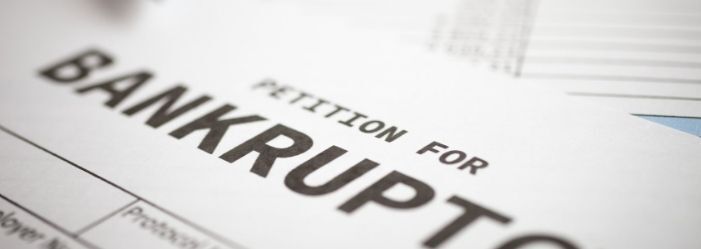
Disclaimer: We are not qualified legal or tax professionals and are not giving advice. Always speak with a qualified professional before making any legal or financial decisions.
Facing financial hardship can lead to the daunting consideration of bankruptcy, a legal process designed for those overwhelmed by debt. Bankruptcy chapters 7, 11, and 13 offer different paths to addressing financial troubles, each tailored to specific circumstances.
This guide clarifies these options, helping you understand the critical differences and implications of each bankruptcy chapter.
Before making such a significant decision, it's crucial to explore all aspects, from eligibility to the impact on your financial future, and seek professional legal advice to navigate this complex area.
Don't want to read through? Speak to a debt specialist right now.
What is Bankruptcy?
Understanding
bankruptcy and the pros and cons is extremely important before you choose to undertake this legal action. Basically, bankruptcy is a legal action taken by a court to turn your assets into cash, known as liquidation.
Your creditors are then paid either in full or in part. Depending on the type of bankruptcy you claim, you are released from existing
debts or your debt is restructured. You are then able to restart your financial life.
Different Types of Bankruptcy
- Chapter 7 Bankruptcy
- For individuals
- Only a specific amount of debt can be restructured
- Must earn less than your state’s median income
- Must show financial records for a “means test.”
- In general, Chapter 7 covers credit cards, foreclosure, medical bills, repossession, and utility debts
- Home and cars are generally protected
- Generally erases debt after all assets are liquidated
- Chapter 11 Bankruptcy
- For businesses, although some individuals can file
- Restructure and reorganize debts
- The amount of debt to be restructured is not limited
- Chapter 12 Bankruptcy
- Family farmers or fishermen
- Reorganize finances and debts in order to stay in business
- Chapter 13 Bankruptcy
- For individuals
- Earn more than your state’s median
- Between $250,000 and $750,000 in unsecured debt
- Restructures debt which must be repaid
- Three to five years to repay debts
Comparing Different Types of Bankruptcy
There are four main types of personal and business bankruptcy under the US Bankruptcy Code:
Chapter 7
- Liquidation bankruptcy
- For individuals and businesses
- Assets sold to pay creditors, remaining debts discharged
- Best for those with income under the state median level
Chapter 13
- Reorganization bankruptcy
- For individuals and sole proprietors
- Debts restructured and repaid over 3-5 years
- Best for individuals with income over the state median
Chapter 11
- Reorganization bankruptcy
- Mostly used by businesses
- The company continues operating under court supervision
- Debts restructured through approved repayment plan
Chapter 12
- Reorganization bankruptcy
- For family farmers and fishermen
- Debts restructured and repaid over 3-5 years
- Allows keeping farm property
Key differences include who qualifies if debts are restructured or discharged, the timeline for completion, and property retention. Consult an attorney to determine which type fits your situation.
Pros and Cons of Filing for Bankruptcy
Bankruptcy has some positive outcomes and many serious consequences. Bankruptcy should be your last resort and only after all other methods from credit counseling to debt settlement to debt consolidation have been exhausted. For more about bankruptcy, check out this article.
Pros of Bankruptcy
- Relief from contact with creditors
- Delays foreclosures
- Relief from crushing debt
- Immediate relief from harassment and lawsuits from creditors
- Automatic stay halts foreclosures, wage garnishments, utility shutoffs
Cons of Bankruptcy
- Credit rating - bankruptcy stays on your credit report for up to ten years and will affect your credit score
- Loan potential - a bankruptcy makes you look like a bad risk. Your interest rate will be far higher and your ability to get a loan is decreased
- Make affect your ability to apply for a job, insurance policy, or filling out a renter’s application, etc.
- Not all debts, such as back alimony or child support, are discharged
- Can damage the credit report of co-signers
- Can damage credit for 7-10 years, hurting loan and credit chances
- Future employers may see bankruptcy on background checks
- Certain debts like student loans, alimony, and child support are not discharged
- Potential for losing property if exemptions don't protect it
- Significant legal fees and court costs
- Tax liabilities may still remain
- Financial records exposed during proceedings
Steps to Take Before Filing for Bankruptcy
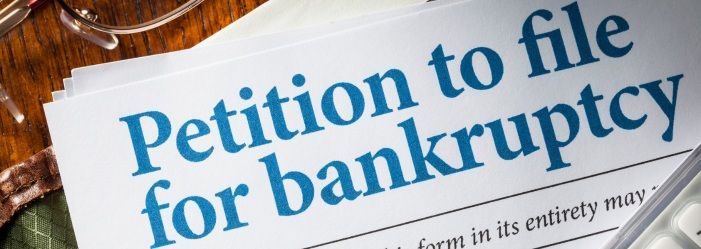
If you decide bankruptcy is your best option, there are important steps to take first:
Consult an attorney
- Schedule a consultation with a bankruptcy attorney
- Discuss your specific situation and options
- Get advice on which chapter of bankruptcy may fit best
- Learn what exemptions you may qualify for
- Review all paperwork with the attorney before filing
Get your credit reports
- Request free reports from Equifax, Experian and TransUnion
- Review all debts and amounts owed
- Identify any errors to dispute before filing
- Ensure all creditors are included in your filing
Complete credit counseling
- Bankruptcy law requires pre-filing credit counseling
- Receive a certificate proving you completed counseling
- Counseling provides guidance on managing finances
Gather documents
- Tax returns and pay stubs to prove income
- Bank statements to determine average balances
- Vehicle titles, property deeds to list assets
- Mortgage statements, and loan agreements to identify debts
List property and assets
- Account for all real estate, vehicles, and valuables owned
- Research local rules on property exclusions and exemptions
- Identify assets with liens or loans against them
Thoroughly preparing your paperwork and following all pre-filing steps helps ensure your bankruptcy case goes smoothly.
The Bankruptcy Process
The bankruptcy process is fairly straightforward but is quite complex and time consuming. Once you get all the paperwork filled out and submitted, it takes about four to six months to complete the process.
It is also very expensive to file and to hire an attorney.
Here are the bankruptcy process steps:
- Request your credit report from all the major credit bureaus: Equifax, Experian, TransUnion, PMBC/Microbilt and SageStream
- Download and fill out all necessary paperwork. The following is a list of all forms that may be required and each state has its own paperwork to file
- B 101 Voluntary Petition for Individuals Filing for Bankruptcy
- B 101A Initial Statement About an Eviction Judgment Against You
- B 101B Statement About Payment of an Eviction Judgment Against You 4.
- B 103A Application for Individuals to Pay the Filing Fee in Installments
- B 103B Application to Have Chapter 7 Filing Fee Waived
- B 106 Summary of Your Assets and Liabilities and Certain Statistical Information
- B 106A/B Schedule A/B: Property
- B 106C Schedule C: The Property You Claim as Exempt
- B 106D Schedule D: Creditors Who Hold Claims Secured by Property
- B 106E/F Schedule E/F: Creditors Who Have Unsecured Claims
- B 106G Schedule G: Executory Contracts and Unexpired Leases
- B 106H Schedule H: Your Co debtors
- B 106I Schedule I: Your Income
- B 106J Schedule J: Your Expenses
- B 106J-2 Schedule J-2: Expenses for Separate Household of Debtor 2
- B 107 Your Statement of Financial Affairs for individuals Filing Bankruptcy
- B 108 Statement of Intention for Individuals Filing Under Chapter 7
- B 121 Your Statement About Your Social Security Numbers
- B 122A-1 Chapter 7 Statement of Current Monthly Income
- B 122A-1 Supporting Statement of Exemption from Presumption of Abuse
- B 122A-2 Chapter 7 Means Test Calculation
- Attend a meeting of creditors
- Attend a court hearing
- Complete a financial management course
Alternatives to Bankruptcy
Before resorting to bankruptcy, you may want to explore some alternatives that could provide debt relief without the downsides of bankruptcy.
Debt consolidation
- Consolidates multiple debts into one monthly payment
- May lower monthly payments and interest rates
- Loans can be secured or unsecured
- Doesn't reduce the total amount owed
Debt settlement
- Works with creditors to agree on reduced lump sum payoffs
- Typically settles debt for 30-50% of the balance
- Accounts become defaulted when settling
- Fees paid to settlement company
Credit counseling
- Non-profit agencies provide guidance on managing/repaying debts
- Can negotiate lower interest rates, waived fees, reduced balances
- Establish a Debt Management Plan for repaying debt over time
- Ongoing creditor negotiations and support
Sell assets
- Selling valuable assets like property, vehicles, or equipment
- Use proceeds to pay down debts directly
- Allows controlling liquidation rather than court-ordered
While not providing an instant fresh start like bankruptcy, these alternatives may help repay debts without damaging credit scores long-term.
FAQs
Conclusion
Filing for bankruptcy is a major decision that requires carefully weighing the pros and cons of your unique situation. While it does provide debt relief, the impact on your finances and credit can last for years. Thoroughly explore all alternatives first before resorting to bankruptcy. Should you decide to file, be sure to consult an attorney and take all necessary steps to prepare.
Understand the differences between Chapter 7 and Chapter 13 to choose the best path forward. With proper planning and support, bankruptcy can help you make a fresh start if you've exhausted all other options. The road to financial recovery will take time and discipline, but it is possible to bounce back from bankruptcy stronger than before.
Bankruptcy is a very serious means to eliminate or restructure your debt. Chapter 7 bankruptcy is designed for individuals who make less than the state median income and erases all debt after all assets have been seized and liquidated.
Chapter 13 bankruptcy is for individuals earning more than the state median income with unsecured debt between $250,000 and $750,000. Debts are repaid over three to five years.
Before you file for bankruptcy, talk to a
debt specialist and always speak with an attorney before making the decision.
*Disclaimer: Pacific Debt Relief explicitly states that it is not a credit repair organization, and its program does not aim to improve individuals' credit scores. The information provided here is intended solely for educational purposes, aiding consumers in making informed decisions regarding credit and debt matters. The content does not constitute legal or financial advice. Pacific Debt Relief strongly advises individuals to seek the counsel of qualified professionals before undertaking any legal or financial actions.
✔ Accredited by Better Business Bureau with BBB A+ rating (4.93 rating and 1678 reviews)
✔ US News and World Reports and Bankrate ranked Pacific Debt Relief as one of “The Best Debt Relief Companies of 2024”
✔ 6.9 star rating by BestCompany.com (over 2379 client reviews)
✔ 4.8 star rating by TrustPilot based (over 1613 verified consumer reviews)
✔ ConsumerAffairs.com Accredited (over 544 verified reviews with an average rating of 5 stars)
✔ A Top 10 Rated Compan by TopTenReviews.com , ConsumersAdvocate.com and Top10debtconsolidation.com
✔ 4.6 star rating by Google (229 client reviews)
✔ 100% rating by SuperMoney (9 client reviews)
Reduce Your Credit Card Debt By Up to Half
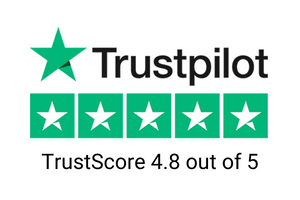
BBB Reviews | 4.9/5.0 Rating
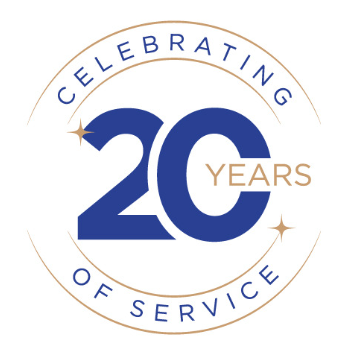

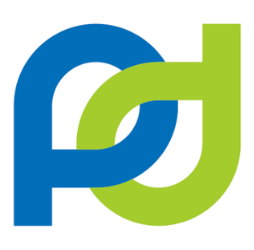






 Do Not Sell My Personal Information
Do Not Sell My Personal Information